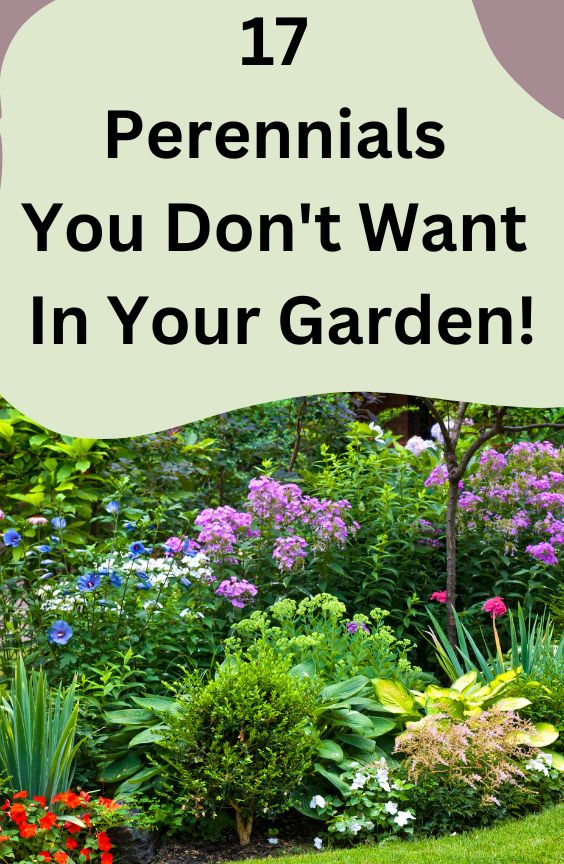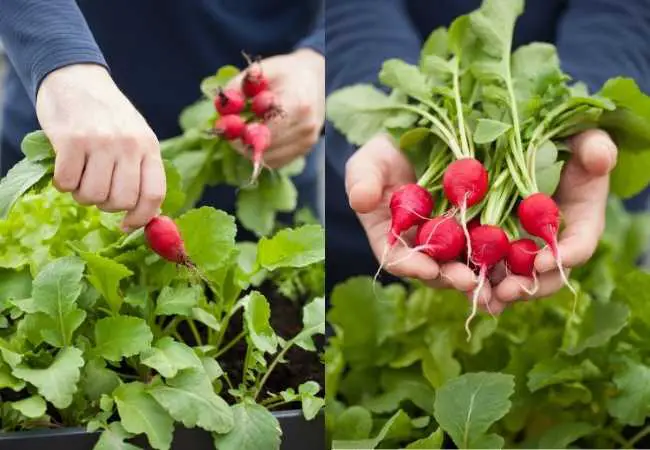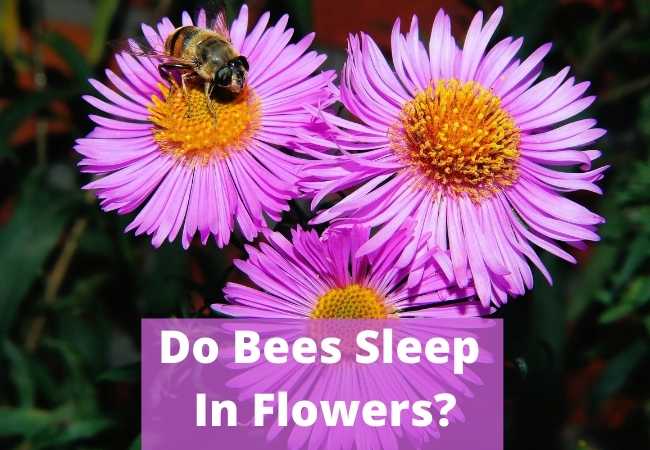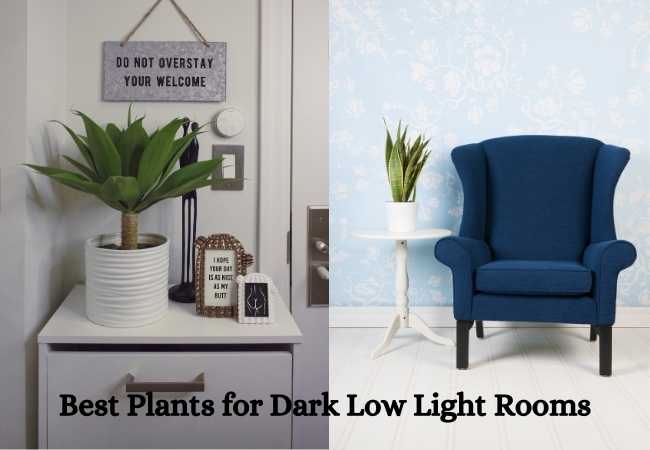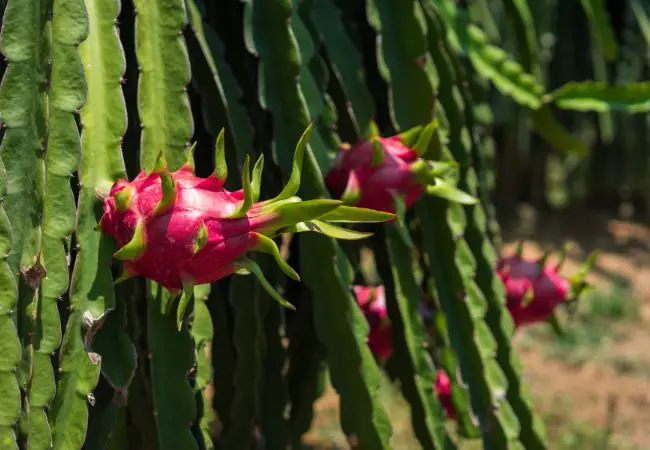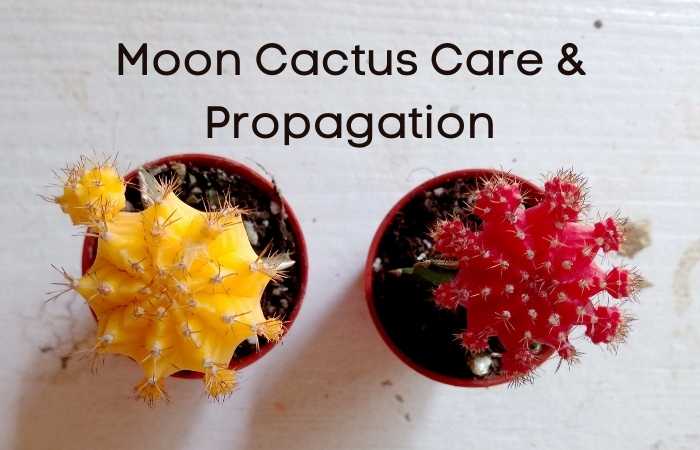17 Perennials You Don’t Want In Your Garden
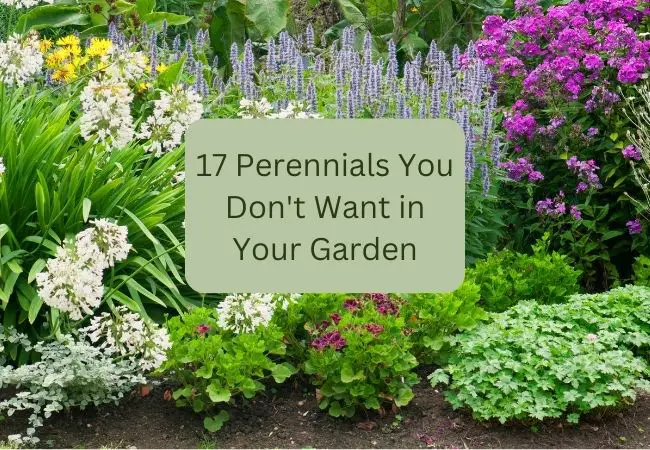
These are the 17 perennials you don’t want in your garden. Having a beautiful and thriving garden is the dream of every gardener. However, selecting the right perennials for your garden is crucial in ensuring its success.
Perennials You Don’t Want in Your Garden
While there are countless stunning perennials to choose from, there are certain varieties that can cause more harm than good.
Having gardened for many years I will explore perennials that I feel you should avoid in your garden to prevent invasive growth and aggressive spreading.
Some of these perennials also cause allergies, toxicity, high maintenance, and the sneaky presence of unwanted weeds.
Invasive Perennials
Invasive plants are notorious for their ability to rapidly spread, outcompeting and displacing native species.
They can wreak havoc on your garden’s biodiversity and require extensive efforts to control. Three examples of invasive perennials to avoid are:
Japanese Knotweed
This tenacious perennial has bamboo-like stems and heart-shaped leaves. It forms dense thickets, suppressing other plants and damaging structures.
Purple Loosestrife
Despite its attractive purple flowers, purple loosestrife poses a serious threat to wetlands and waterways. Its rapid growth chokes out native plants and disrupts ecosystems.
Bamboo
While bamboo can be visually appealing, its vigorous spreading habit can quickly become unmanageable. It can invade neighboring areas, including your neighbor’s yard, causing disputes and costly removal efforts.
Aggressive Spreader Perennials
Some perennials tend to aggressively spread, overtaking neighboring plants and dominating garden beds. Here are three examples of perennials known for their aggressive spreading habits:
Mint
Mint is notorious for its invasive nature and ability to take over garden beds. It sends out underground runners, quickly colonizing large areas. Plant it in containers to keep it contained.
Gooseneck Loosestrife
Despite its charming white flowers, gooseneck loosestrife is a prolific spreader. Its long arching stems root at the nodes, allowing it to quickly colonize new areas.
Bishop’s Weed
Often used as a ground cover, bishop’s weed can become a nightmare for gardeners. It forms dense mats of foliage, making it difficult to eradicate once established.
Allergenic Perennials
If you or your family members suffer from allergies, it’s essential to avoid planting perennials that can trigger allergic reactions. Here are three examples of allergenic perennials to steer clear of:
Ragweed
Ragweed is a common allergen that produces abundant pollen, causing hay fever symptoms in many individuals. Its wind-dispersed pollen can travel far, affecting people beyond your garden’s boundaries.
Poison Ivy
While poison ivy is technically not a perennial, it’s crucial to identify and eradicate it if it shows up in your garden. Its urushiol oil can cause severe skin irritation and allergic reactions.
Giant Hogweed
Giant hogweed is not only a danger to your skin but also poses a threat to your garden’s biodiversity. Its sap can cause severe skin burns and blisters, and its spread should be prevented.
Poisonous Perennials
In gardens where children or pets frequent, it’s essential to avoid planting perennials with toxic properties. Here are three examples of poisonous perennials to avoid:
Castor Bean
The seeds of the castor bean plant contain ricin, a highly toxic substance. Ingesting even a small amount can be fatal, making it unsuitable for gardens with young children or curious pets.
Oleander
Oleander is an evergreen shrub with beautiful flowers, but its leaves and stems contain toxic compounds. Ingestion can lead to severe poisoning, making it a hazardous choice for gardens.
Datura
Also known as “jimsonweed” or “devil’s trumpet,” datura contains alkaloids that can cause hallucinations and toxic reactions. Keep it out of reach of children and pets.
High Maintenance Perennials
Some perennials require extensive care and attention to thrive, making them impractical for gardeners seeking low-maintenance options. Here are three high-maintenance perennials to avoid:
Delphinium
Delphiniums are stunning flowers but demand frequent watering, staking, and protection from pests. They require considerable time and effort to maintain their tall, delicate blooms.
Lupine
Lupines can be challenging to grow due to their susceptibility to pests and diseases. They require well-drained soil, regular fertilization, and constant monitoring for issues.
Baby’s Breath
While baby’s breath is often used as a filler in floral arrangements, it can become invasive and difficult to control in the garden. It requires constant deadheading to prevent self-seeding and excessive spreading.
Unwanted Weeds Disguised as Perennials
Some weeds can mimic desirable perennials, fooling gardeners into nurturing them unknowingly. Here are three examples of weeds disguised as perennials to be cautious of:
Creeping Charlie
Often mistaken for a ground cover, creeping Charlie can quickly invade garden beds and lawns. Its purple flowers may be attractive, but its aggressive spreading habit makes it a nuisance.
Ground Ivy
Similar to creeping Charlie, ground ivy can be challenging to eradicate once it establishes itself in your garden. It forms dense mats of foliage, displacing other plants.
Bindweed
Bindweed can be mistaken for a morning glory vine, but it’s a persistent weed that can strangle and smother desirable plants. Its deep-rooted nature makes it difficult to control.
Final Thoughts on Unwanted Perennials
If you want to have a thriving and low-maintenance garden, it’s important to avoid planting perennials that can cause more trouble than joy.
I have seen people struggle to get rid of mint just because they planted it in an area that is not contained.
By making informed choices, you can create a garden that flourishes without the headaches associated with troublesome perennials.
I hope this post on perennials you don’t want in your garden was helpful. If you love gardening, follow me on Multigardening Pinterest for more awesome gardening posts.
